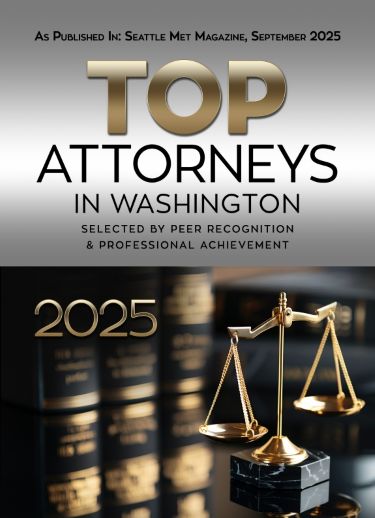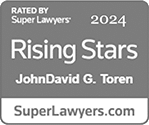Menzer Law Group
Vaccine Injuries
Championing the Rights of Vaccine Injury Victims in Washington State
At Menzer Law Group, we recognize the vital role vaccines play in safeguarding public health by preventing severe and potentially fatal diseases. Despite rigorous safety and efficacy testing, vaccines can sometimes cause adverse reactions and injuries. While these are uncommon, they can lead to serious, sometimes permanent injuries. Our dedicated legal team of vaccine injury lawyers, including attorneys Matt Menzer, JohnDavid Toren, and Brady Douglas—are among the select few in Washington state authorized to practice in the U.S. Court of Federal Claims. Together, we have the experience and expertise required to advocate for individuals who have experienced significant injuries from vaccines.
Navigating the National Vaccine Injury Compensation Program (NVICP)
Established in the 1980s through the National Childhood Vaccine Injury Act, the NVICP provides a no-fault alternative for compensating individuals injured by vaccines. This program eliminates the need to file a civil lawsuit against vaccine providers or manufacturers, simplifying the process for claimants to receive compensation. The NVICP covers most routine vaccines administered in the United States, including, but not limited to:
- Tetanus toxoid-containing vaccines
- Pertussis antigen-containing vaccines
- Measles, Mumps, and Rubella (MMR) vaccines
- Polio vaccines (both OPV and IPV)
- Hepatitis B, Hepatitis A
- Haemophilus influenzae type b (Hib)
- Varicella (Chickenpox)
- Rotavirus
- Pneumococcal conjugate
- Meningococcal
- Human papillomavirus (HPV)
- Seasonal influenza vaccines
Expert Legal Representation for Vaccine Injury Claims
The vaccine injury attorneys at Menzer Law Group have extensive experience navigating the complex landscape of vaccine injury claims. Here’s how we can help if you or your child has suffered from a vaccine-related injury:
- Comprehensive Case Evaluation: We offer a complimentary case review to understand the specifics of your situation and assess your eligibility for filing a claim under the NVICP.
- Evidence Gathering and Claim Preparation: We meticulously gather medical records and other necessary documentation to support your vaccine injury claim. If your injury is listed on the Vaccine Injury Table, which outlines injuries presumed to be caused by vaccines, the process may be more straightforward.
- Expert Medical Opinions: For injuries not listed on the Vaccine Injury Table or that occur outside the typical timeframe, we hire and work with medical experts to substantiate that the vaccine caused the injury.
- Filing and Representation: We handle all aspects of filing your claim and representing you throughout the process, ensuring that all legal standards are met and maximizing your chances of a favorable outcome.
Understanding the Vaccine Injury Table
The Vaccine Injury Table lists specific injuries and conditions that are presumed to be caused by the vaccines, along with the time frames in which they must presumably occur after vaccination. If your case fits these criteria, compensation is more readily accessible. However, additional medical evidence and expert testimony are required for injuries or conditions not listed, or if symptoms present outside the designated period. Learn more about the ins and outs of vaccine injury law today by contacting Menzer Law Group.
Get in touch today.
What You Can Expect From Us
Choosing Menzer Law Group means selecting a firm that is based upon empathy and expertise. We understand the physical and emotional toll a vaccine injury can take on individuals and their families. Our approach is characterized by:
Menzer Law Group is an excellent choice if you’re seeking a law firm that combines decades of experience, expertise, and success with a compassionate approach to client service.
- No Upfront Legal Fees or Costs: We advance all costs related to filing your NVICP claim, including expert fees. These are reimbursed by the program upon the resolution of your case, ensuring that there are no financial barriers to seeking justice. Similarly, at the end of the case we submit our legal fees to the Court for approval and payment through the program.
- Dedicated and Experienced Advocacy: With over 30 years of experience, our attorneys are committed to obtaining the compensation you deserve, providing support and guidance every step of the way.
- Accessibility and Support: We are here to answer your questions, help you understand your rights, and navigate the complexities of vaccine injury claims.
Reach Out for a Complimentary Case Review
If you or a loved one has experienced a severe reaction or injury from a vaccine, Menzer Law Group offers a complimentary case review to assess your case and help determine if you may qualify for compensation under the NVICP. Call us today at (206) 903-1818 or use our online contact form to request your free case evaluation. We understand the stress and emotional and physical suffering you may be experiencing and are dedicated to responding to you in a timely manner.











































Complimentary Case Review
Our skilled team will carefully assess your claim to ensure it matches our areas of expertise and our focus on cases where we can have the most profound impact. We understand the stress and emotional and physical pain you may be experiencing, and we are committed to responding to you promptly and respectfully.
Focused Case Engagement
Menzer Law Group is selective in our cases, focusing our resources where we can make the most significant impact. We concentrate on medical malpractice incidents with severe injuries that require the dedication of substantial attorney and staff time and the services of experts in various medical, scientific, and financial fields. This dedicated approach allows us to provide thorough, significant, and impactful representation to each client we represent.
